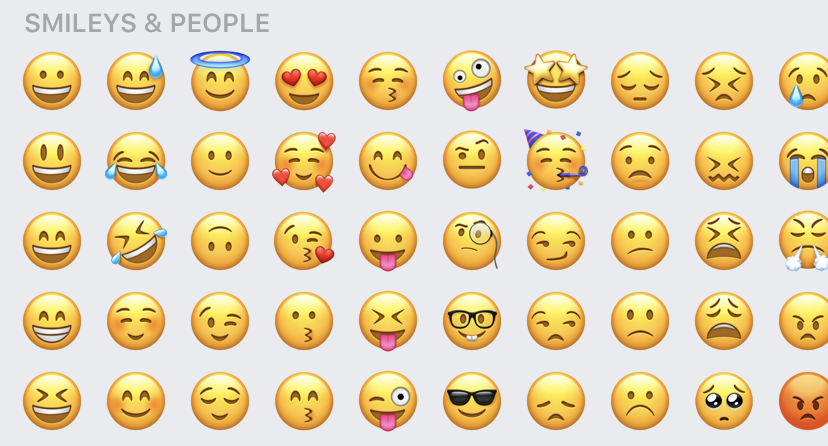When Apple first introduced the iphone emojis in 2007, it revolutionized the way we communicate. A few years later, in 2011, iOS 5 added a feature that has since become a cultural phenomenon: emojis. What started as a small collection of simple images has grown into a vast library of expressive symbols, now universally recognized and used in daily communication. Today, emojis are more than just playful icons; they are a rich visual language that transcends borders and generations.
 as its Word of the Year, highlighting emojis' influence on communication. Brands and celebrities frequently use emojis in marketing to tap into the informal, playful tone they offer. Even politicians have used emojis to make their messages more relatable or engaging on social media.
as its Word of the Year, highlighting emojis' influence on communication. Brands and celebrities frequently use emojis in marketing to tap into the informal, playful tone they offer. Even politicians have used emojis to make their messages more relatable or engaging on social media.
The Origins of Emojis
Emojis didn’t actually originate with Apple. They were first created in Japan in the late 1990s by Shigetaka Kurita, a designer for NTT DoCoMo. Kurita developed the original 176 emoji characters to help users communicate more effectively on mobile devices, replacing text-heavy messages with small images to express emotions, actions, and objects. Apple introduced its version of emojis in the iPhone in 2011, offering a streamlined set based on Unicode standards. Initially, they were hidden behind the Japanese keyboard, but as their popularity exploded, emojis became a universal feature accessible to all users. By incorporating emojis into iOS, Apple gave them global reach, embedding them into mainstream digital conversations.Expansion and Diversity
From the basic smiley faces, hearts, and animals, the emoji keyboard has grown into a comprehensive visual toolkit. Today, there are more than 3,000 emojis available on the iPhone, with new ones added every year. Apple, along with the Unicode Consortium (which oversees emoji standards), has continuously expanded the emoji library to reflect a wider range of human experiences, professions, emotions, and cultures. One of the most significant changes came in 2015, when Apple introduced skin tone modifiers, allowing users to select different shades for human emoji characters. This shift toward diversity was in response to widespread calls for more inclusive representation, acknowledging the importance of emoji in reflecting global populations. Since then, new emojis have included representations of people with disabilities, same-sex couples, gender-neutral figures, and cultural symbols from around the world.Emoji as a Cultural Marker
Emojis have evolved into a cultural marker, shaping and reflecting the way we communicate in the digital age. Entire conversations can now be held using just emojis, with users relying on the images to express emotions, convey jokes, or summarize complex ideas quickly. Emojis are no longer just for casual texting either; they have made their way into advertising, art, social media campaigns, and even politics. For example, in 2015, Oxford Dictionaries selected the "Face with Tears of Joy" emoji as its Word of the Year, highlighting emojis' influence on communication. Brands and celebrities frequently use emojis in marketing to tap into the informal, playful tone they offer. Even politicians have used emojis to make their messages more relatable or engaging on social media.
as its Word of the Year, highlighting emojis' influence on communication. Brands and celebrities frequently use emojis in marketing to tap into the informal, playful tone they offer. Even politicians have used emojis to make their messages more relatable or engaging on social media.
